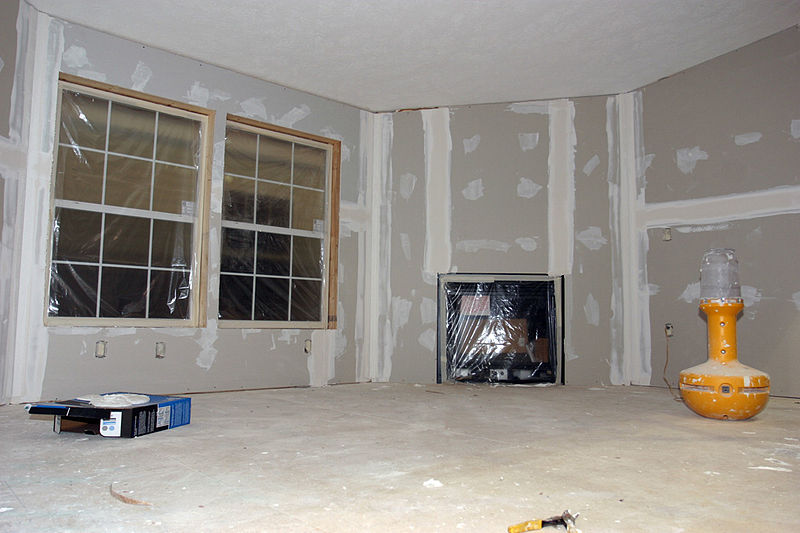
Preparing Your Home for Hurricane Season
Whether you’re a Florida native, semi-native or newbie, hurricane season (June 1 through Nov. 30) affects us all. But even though you may have ridden out your share of named storms, it always helps to review the basics of getting your home ready to prevent or minimize damage. Keep in mind that your area doesn’t need to take a direct hit to experience destructive winds and flooding rains. No one can afford to be complacent about taking preventive measures that will help you weather the storms this – and every – hurricane season!
For those who have recently become residents, we’ll provide some Hurricane 101 basics. First, a hurricane is a rotating low-pressure system with sustained winds of 74 mph. Unfortunately, that’s just the minimum wind speed. The Saffir-Simpson Hurricane Wind Scale is a 1 to 5 rating based on a hurricane’s sustained wind speed. When you hear a hurricane described as a category 1, 2, 3, 4 or 5 storm, this is what it means.
A tropical storm has sustained winds of 39 to 73 mph. It may or may not develop into a hurricane, but can also cause property damage and flooding to low-lying areas.
Hurricane terms you need to know
Again, newcomers to the Sunshine State may not be familiar with hurricane terminology. Because each has a specific meaning – and an alert for the level of preparedness you need to be at – we’re including this State of Florida reference list.
Tropical Storm Watch: Tropical storm conditions are possible in the area.
Hurricane Watch: Hurricane conditions are possible in the area.
Watches are issued 48 hours in advance of the anticipated onset of tropical storm force winds.
Tropical Storm Warning: Tropical storm conditions are expected in the area.
Hurricane Warning: Hurricane conditions are expected in the area.
Warnings are issued 36 hours in advance of tropical storm force winds.
Eye: Clear, sometimes well-defined center of the storm with calmer conditions.
Eye Wall: Surrounding the eye, contains some of the most severe weather of the storm with the highest wind speed and largest precipitation.
Rain Bands: Bands coming off the cyclone that produce severe weather conditions such as heavy rain, wind and tornadoes.
Storm Surge: An often underestimated and deadly result of ocean water swelling as a result of a landfalling storm, and quickly flooding coastal and sometimes areas further inland.
Preparing your home for the worst
Although hurricane season starts on June 1, the most heavy hurricane activity is during the months of August and September. This means you have an opportunity to tackle the more intensive preparation projects. However, this also is the time of year for almost daily afternoon thunderstorms, so do any necessary shoring up now!
Our blog post – “Hurricane Season is Here! Are You Ready?” – covers such topics as a hurricane safety checklist, and common mistakes that Florida homeowners make. For example, don’t “X” your windows with tape. Contrary to popular belief, it won’t prevent the glass from shattering. Instead, it will create larger, potentially deadly pieces. Ditto for opening windows/doors during the storm to “equalize pressure.” Keep ALL openings into your house securely shut.
The “to-do” list:
- Prune weak, rotting or dead tree branches and remove low-hanging ones near the house (or have a professional do the job).
- Check tree roots for signs of rotting and remove any rotten or diseased trees or shrubs (ditto).
- Clean rain gutters – leaves, branches and other debris can cause overflow, which can damage your siding and/or roof. Again, as with the two tasks above, hire a pro if necessary. NEVER attempt a property maintenance or improvement job that you don’t have the experience, ability or equipment to perform safely.
- Check the caulking around doors and windows. Good caulking is the first line of defense against the water intrusion that can occur during the prolonged driving rains of a hurricane or lingering tropical storm. Water that seeps into past-its-prime caulking also can, over time, damage door and window frames. If you need to recaulk, silicone or urethane lasts the longest and holds up the best. Elastomeric latex caulk is another good choice, as it also is durable and can be painted.
- Remove or secure loose/lightweight objects in your yard, as they can become projectiles and damage your property. Move potted plants, garbage cans, garden ornaments, tools and hanging baskets inside a garage or shed. Move containers too large to bring indoors to a protected area and cluster together, as well as large potted trees and plants; place trees/plants in the pot sideways.
Making your roof more resistant to wind damage
It was only after category 5 hurricane Andrew leveled much of South Florida in 1992 that the state adopted a revised statewide building code that – among other upgrades – required stronger hurricane straps and clips for residential structures. Older homes are less likely to have this level of protection. If you don’t know if your roof truss reinforcements are up to code, hire a professional to perform an inspection.
You may want to hire a professional roofer to inspect your roof for loose shingles, worn seams, etc., and make necessary repairs.
Trust the pros to choose the best paint for your home
Hurricanes are only part of the overall challenges of maintaining a Florida house. Our state’s climate extremes also include relentless summer sun, intense heat and high humidity levels. A good exterior paint job will help protect your home from the elements while enhancing its curb appeal.
As we covered in our blog post – “Mistakes to Avoid When Painting Your Home” – typical Florida houses fall into the following types: concrete block, wood siding, aluminum siding or stucco – which, in this state, tends to be stucco applied over concrete block.
For the best results for most exterior surfaces, industry professionals recommend 100% acrylic latex exterior paint. According to The Money Pit, “These paints have superior adhesion, so they’ll ‘grab’ tightly onto a properly prepared surface. They also are very flexible, which permits them to expand and contract with the surface below in extreme cold or heat. Down the road, these qualities help prevent many common exterior paint failures like peeling and flaking.”
Acrylic latex paints are easy to apply by brush, and contain special additives that can prevent mildew growth. Although acrylic latex paint has a higher cost, it combines paint and primer, and can last 10 years or longer.
Being prepared for hurricane season can help you feel more confident, knowing you’ve taken every step to make your home safe and secure. If you need help getting ready, The Paint Manager has served Central Florida since 2000 with quality professional residential and commercial painting services.
Visit our website to learn about many other services we provide – including pressure washing, roof cleaning and stump removal. Become a member of The Paint Manager to receive a 15% year-‘round member’s discount. Contact us to learn more about our services and membership discount offer.







 The number one reason why you should call
The number one reason why you should call